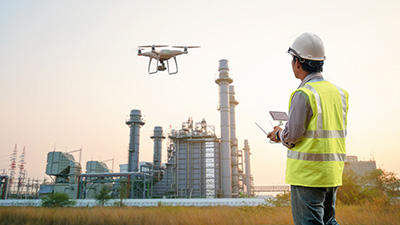When we speak about drone technology, many immediately begin thinking about how it will modernize consumer delivery. Others might think about military drone applications or the way that they will be used by law enforcement.
 However, drones are also helping emergency responders save lives. Here is how emergency responders are using the technology and why it will likely remain critical to emergency response in the future.
However, drones are also helping emergency responders save lives. Here is how emergency responders are using the technology and why it will likely remain critical to emergency response in the future.
What Are Drones?
Drones are also known as “UAVs” or unmanned aerial vehicles. They are aerial vehicles that can also be operated by a human remotely, and they are being used for a wide variety of industries.
Drones have existed since the early 1900s, but the actual technology has ramped up significantly since the 1980s. The global drone market has also grown significantly, as it is expected to be worth over $8.5 billion by 2027.
How Drones Use Computer Vision
Computer vision allows drones to “recognize” images, which means that drones can then recognize people that are stranded after a natural disaster. Once their location is established, drones can also deliver much-needed medical aid to an area that emergency responders cannot quickly or safely reach.
Drones could deliver life jackets to flood victims, or they can also deliver medical supplies or food. With computer vision, drones can better allocate resources, survey the damage, and help victims get the help that they so desperately need.
How Emergency Responders Use Drones
Let’s say that a city experiences a massive natural disaster, such as a hurricane or flood. Drones can be flown over the area to detect exactly where people are for specific search and rescue missions. Drones have become more affordable over recent years, which is another reason why more emergency responders are embracing the technology.
While it may not reach mainstream media, a recent paper concluded that drones were saving nearly one life per week. Obviously, it is easy to see how many departments and organizations in the emergency response sector would want to adopt drone technology to save as many lives as possible. As of today, over 500 lives have been saved.
There’s one clear trend: emergency responders will be using drone technology more than ever over the next several years, and even decades. Find out more about computer vision technology here: https://www.phase1vision.com/cameras
